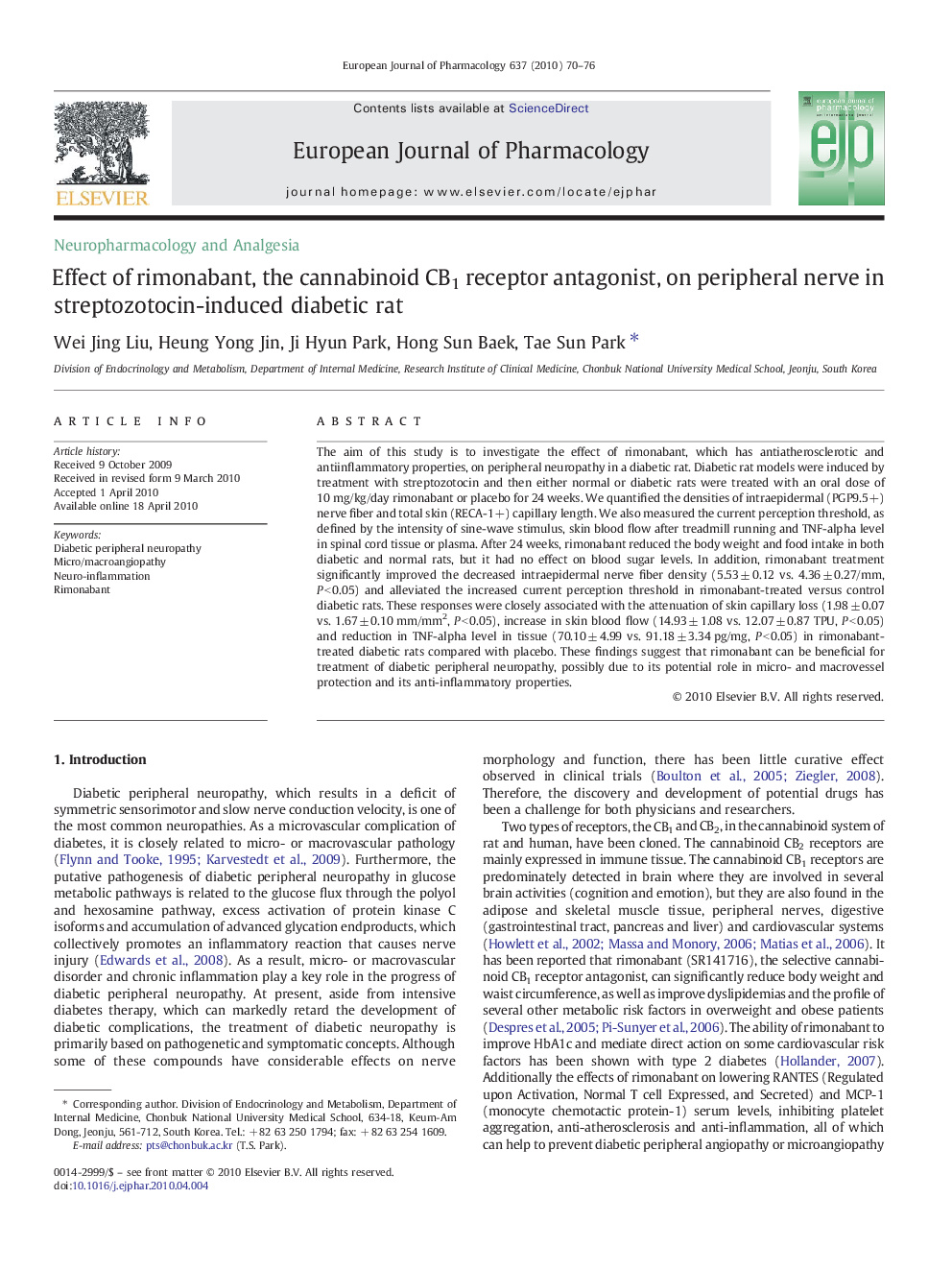| Article ID | Journal | Published Year | Pages | File Type |
|---|---|---|---|---|
| 2533476 | European Journal of Pharmacology | 2010 | 7 Pages |
The aim of this study is to investigate the effect of rimonabant, which has antiatherosclerotic and antiinflammatory properties, on peripheral neuropathy in a diabetic rat. Diabetic rat models were induced by treatment with streptozotocin and then either normal or diabetic rats were treated with an oral dose of 10 mg/kg/day rimonabant or placebo for 24 weeks. We quantified the densities of intraepidermal (PGP9.5+) nerve fiber and total skin (RECA-1+) capillary length. We also measured the current perception threshold, as defined by the intensity of sine-wave stimulus, skin blood flow after treadmill running and TNF-alpha level in spinal cord tissue or plasma. After 24 weeks, rimonabant reduced the body weight and food intake in both diabetic and normal rats, but it had no effect on blood sugar levels. In addition, rimonabant treatment significantly improved the decreased intraepidermal nerve fiber density (5.53 ± 0.12 vs. 4.36 ± 0.27/mm, P < 0.05) and alleviated the increased current perception threshold in rimonabant-treated versus control diabetic rats. These responses were closely associated with the attenuation of skin capillary loss (1.98 ± 0.07 vs. 1.67 ± 0.10 mm/mm2, P < 0.05), increase in skin blood flow (14.93 ± 1.08 vs. 12.07 ± 0.87 TPU, P < 0.05) and reduction in TNF-alpha level in tissue (70.10 ± 4.99 vs. 91.18 ± 3.34 pg/mg, P < 0.05) in rimonabant-treated diabetic rats compared with placebo. These findings suggest that rimonabant can be beneficial for treatment of diabetic peripheral neuropathy, possibly due to its potential role in micro- and macrovessel protection and its anti-inflammatory properties.
